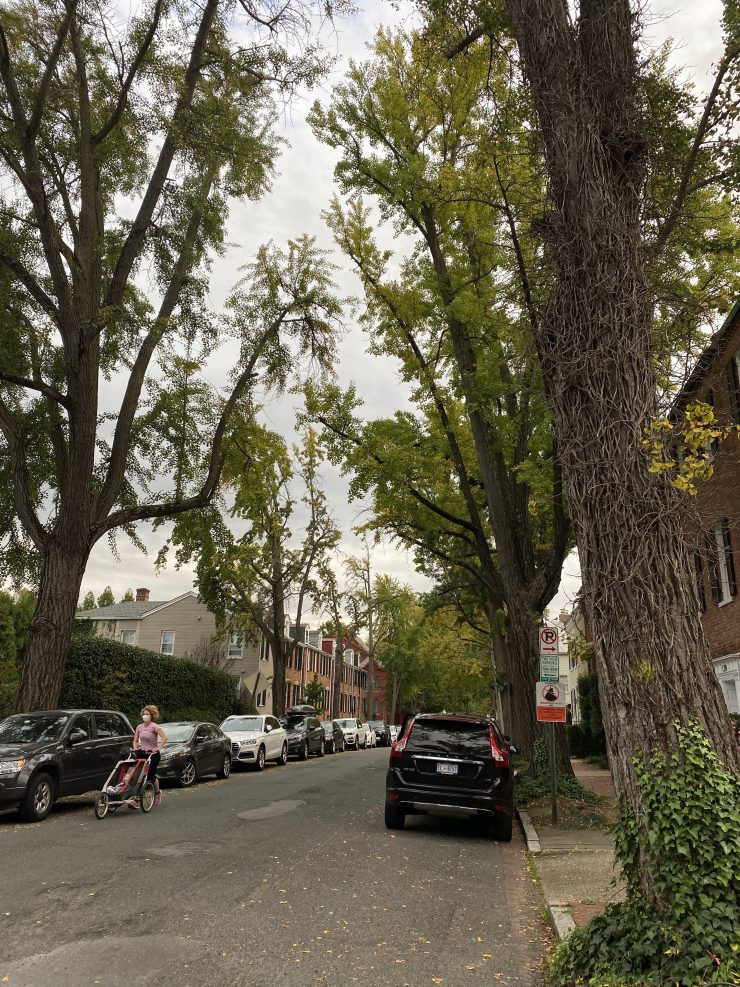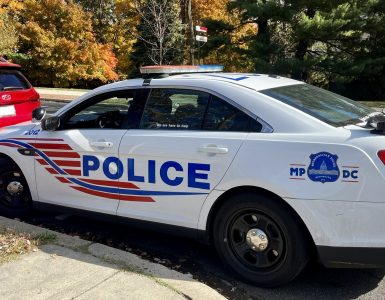Ginkgo trees, bearing golden leaves, are soft on the eyes but harsh on the nose. When the towering trees change color in the fall, they also produce a fruit smelling of moldy cheese.
Because of their pungent smell, the city allows homeowners to petition to remove the female trees, which bear the contentious berries, on their blocks.
According to city-data, the Georgetown area has one of the highest counts of female Ginkgo trees in the district. A map produced by the city shows there are between 52 and 89 trees in the neighborhood.
Georgetown resident, Kelly Banner, visits Rose Park, lined with several 40-foot-tall Ginkgo trees, at least twice a week. The sidewalk bordering the park is often riddled with squashed Ginkgo berries, producing that familiar spoiled odor.
Though Banner described the smell as “vomit-inducing,” she said that doesn’t keep her from visiting the park.
“It’s not the most pleasant aroma in the world,” Banner said. “But the trees are beautiful and I would think that would make up for the smell.”
Banner said she might feel differently if the trees were outside her own home: “I’m not sure I would care for my street to be lined with them,” Banner said. “I might not love it, but I’d probably learn to live with it.”
Banner said she was shocked when she learned that residents could have the trees removed.
“The reason why Georgetown is so unique for me is all of the foliage,” Banner said. “If we start chopping down trees, we will lose parts of who we are.”
A compromise
Instead of removing the smelly trees, Trees for Georgetown, a citizen-led committee, is trying to save half a dozen trees on two of the neighborhood’s blocks.
Betsy Ames, chair of Trees for Georgetown, said the Ginkgo trees in Georgetown, some more than 100 years old, are all worth saving.
“You just don’t cut down a healthy tree,” Emes said. “If it’s not dead or dangerous, don’t remove it, especially not Ginkgos. These are ancient trees.”
However, Emes acknowledges that residents have the right to petition.
Residents on Avon Place and 27th Street began a petition last year requesting that the city remove the female Ginkgos on their blocks. The petition garnered 60% of the residents’ support on both blocks, but the petition was thrown out over a technicality.
That’s when Trees for Georgetown stepped in to compromise with the residents in an attempt to save the trees on Avon and 27th.
“Trees for Georgetown is not only about planting trees,” Emes said. “We’re also about saving trees and trying to educate people about the value of trees, what they do for us, and how to take care of them.”

Emes said, rather than “let the city take down the beautiful, healthy trees,” Trees for Georgetown struck a deal with the residents, agreeing to have the berries cleaned in front of their houses if they did not resubmit their petition.
The residents agreed and Trees for Georgetown hired a local landscaping and cleaning company, Clean Decisions, to clear the berries. The company began cleaning in mid-October for two hours each weekday morning. The clean-ups will continue for the remainder of the fruiting season, which usually lasts until early December.
Emes said she is hoping the fruiting season will wrap up in six weeks.
Though Trees for Georgetown could not hold its annual fundraiser this year because of the coronavirus pandemic, Emes said the group had a “little bit of money” leftover from last year.
The organization decided to invest it into the Ginkgo pilot, Emes said, because “It’s just awful to cut down healthy trees just because they become a nuisance to one or two people.”
In the past two years, Emes estimates about two Ginkgos have been removed in Georgetown, which she said is a “big loss.”
The trees “take forever to get big,” she said. Like most ancient trees, they are also resistant to disease, pollution, drought, and floods, Emes said. “To have something like that removed is just a crime.”
Depending on how well the pilot works and its final price tag, Emes said. Trees for Georgetown might expand its effort in the future.















Add comment